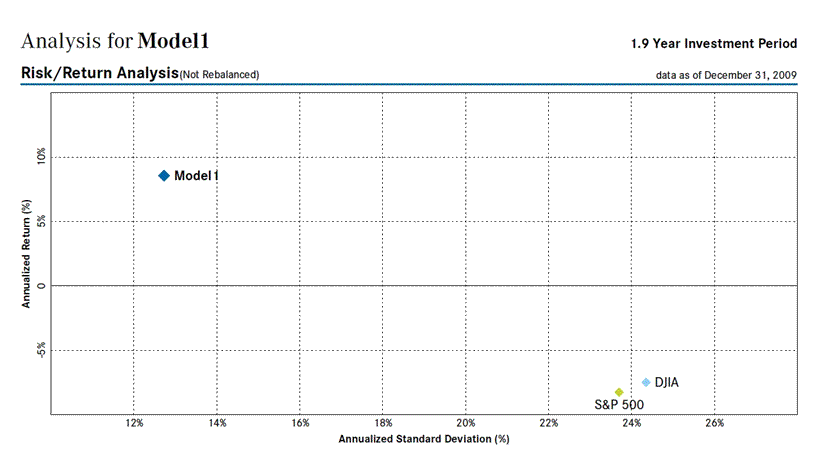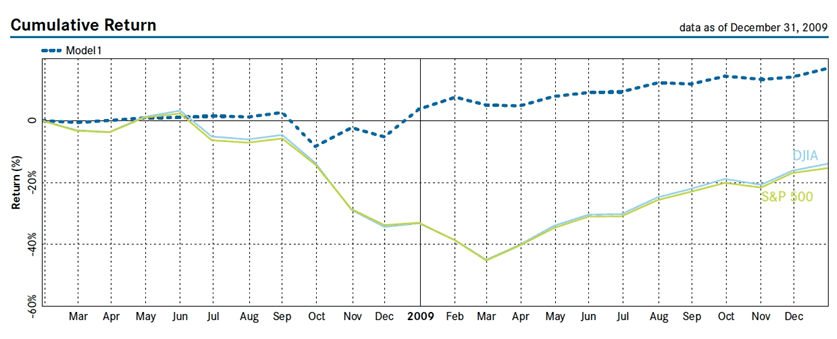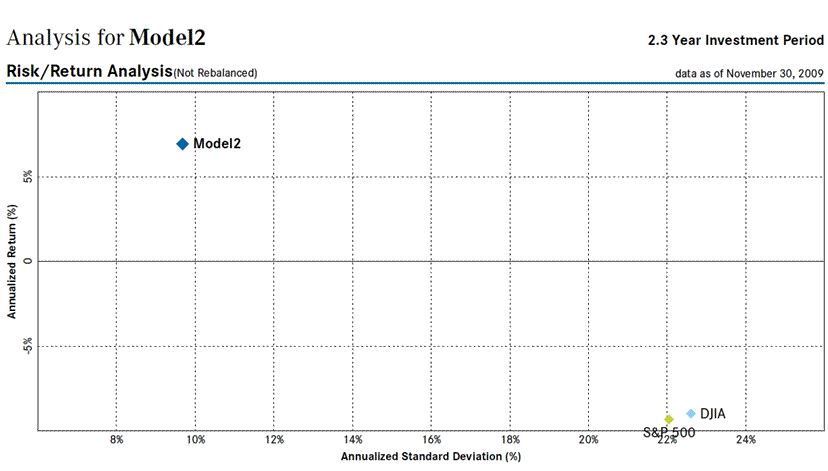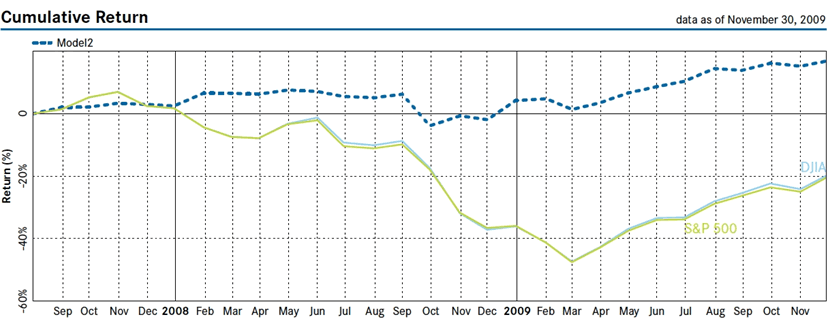Investors Search for Income, Preferred Stocks Secret
Portfolio / Dividends Jan 08, 2010 - 09:29 AM GMTBy: Andy_Sutton
 One thing that is unlikely to change as we begin a new year and decade is the fact that savers continue to sit in the corner wearing the proverbial dunce cap. They’re an often unmentioned casualty in a world of bailouts, big government spending, and general financial irresponsibility. In a normal, healthy economy, savers would be the focus of attention. In our deviant economy, however, where more people are employed by government than goods-producing industries, savers are disregarded. Harsh words? Absolutely. Certainly no one in charge has actually come out and said it, but as the old adage goes, actions speak much louder than words.
One thing that is unlikely to change as we begin a new year and decade is the fact that savers continue to sit in the corner wearing the proverbial dunce cap. They’re an often unmentioned casualty in a world of bailouts, big government spending, and general financial irresponsibility. In a normal, healthy economy, savers would be the focus of attention. In our deviant economy, however, where more people are employed by government than goods-producing industries, savers are disregarded. Harsh words? Absolutely. Certainly no one in charge has actually come out and said it, but as the old adage goes, actions speak much louder than words.
However the news is not all bad. As I chronicled in the first piece of this series, there are ways to find income – even in this environment. And contrary to the popular investing misinformation you don’t have to take on a boatload of risk to get it. The goal of this essay is to discuss in generic terms some of the methods I’ve used to find income over the past few years and introduce one of the more obscure income vehicles for those investors who might be interested in a little risk. With CD rates still in the basement, and investors in US Government bonds losing 3.5% in 2009, most people are probably looking for some new ideas to make money in our brave new financial reality.
Preferred Stocks – A Well-Kept Secret?
If you’re willing to spend a little time doing research, you will find literally hundreds of preferred stocks from food companies to manufacturers to financial and insurance companies. Many are eligible for 15% tax treatment making their comparative yields even higher. Speaking of yields, they will vary greatly based on both the type of company offering the preferred stock, the rating, and the supply and demand dynamics for the security. The following is not meant to be an inclusive, exhaustive description of all the characteristics of preferred shares, but is intended to provide some basic information about preferred shares to frame the discussion.
Preferred stocks are really a hybrid of common stock and bonds. Preferred stockholders generally don’t get voting rights in company matters, but are first in line for dividend payments. Some are cumulative some are non-cumulative. Cumulative preferred shares accumulate dividends in the event payments are suspended for any reason. In the event payments are reinstated, preferred shareholders are paid first and they’re paid for any dividends accumulated during the payout stoppage. The preferred stocks of major companies are generally listed on exchanges, but there are also many that are available Over-the-Counter (OTC).
Preferreds are like bonds in that their stated yield is based on the face value of the stock. For example, a preferred that pays $1.00/year and has an face value of $25.00/share would have a yield of 4% and be designated as such. If you discover this stock a year later at $26.00/share and buy it, your yield based on the purchase price would be a bit lower at 3.85%. Conversely, if you buy in at $24.00/share, your yield would be higher at 4.17%.
Two ‘Preferred’ Model Portfolios
Let’s look at two ‘model’ portfolios. These have been constructed over the past few years when it became obvious that we were heading into a period of near-zero rates due to the Fed’s propensity for putting the liquidity hammer to the floor.
The first consists of just 4 issues – all preferred stocks of utility companies in equal proportions:

Due to the fact that one of the components was only issued less than 2 years ago, we only have that period of time to compare the model to the benchmark S&P500 and Dow Jones Industrials. From a risk and volatility perspective, the model comes in with a standard deviation of 12.82% while both the Dow and S&P comes in at nearly twice that with the S&P at 23.87% and the Dow at 24.32%. In terms of return, the Dow and S&P both lost around 7.5% annually for the period while the model gained nearly 9% annually during the same time. So to frame the comparison, the model beat the indexes by roughly 33% with about half the volatility during the worst financial crisis in recent memory. The chart below graphically displays the returns:

Admittedly, during the ongoing bear market rally, the indexes have beaten the model soundly, but remember the purpose of the model – income. The model yields just over 6%. The charts above show that the model did an excellent job of protecting capital while providing stable income. And it was done with very little in the way of volatility except for a 2-month period in late 2008 when the globe’s financial system stood on the precipice. It must be noted that many investors have chosen to use this type of investing strategy for growth as well, opting to use their cash distributions to purchase more shares. Compounding at 6% sure won’t win many awards on CNBC, but in the real world where people are trying hard to protect their savings, it is a valid construct to consider.
Let’s now take a look at a second model: one that has a bit more history behind it. It consists of 2 utility company preferred stocks, a telecom preferred, a no-load special purpose mutual fund, and a preferred stock ETF – in equal proportions. As a general rule I don’t favor mutual funds because of excessive fees, confusing sales charge structures, black-box management, and high expense ratios, but there are a couple of funds that exist for a single purpose, don’t have the other detriments listed above, and as such are suitable for inclusion in portfolios.

Much like the first model, this one has a much lower volatility than the benchmark S&P/Dow. Annualized Std Deviation is 9.44% compared to 22.01% for the S&P and 22.57% for the Dow. On the return side of the ledger, the model provided an annualized return of 7.02% while the Dow and S&P were both around -9%. The data on this model goes back to August 2007 – before the market’s top. The chart below graphically illustrates the comparison between the model and the benchmarks.

The cumulative return for the model was 16.94% over the 2.3-year period as compared to a loss of 20.44% for the S&P and a loss of 19.74% for the Dow. The model beat the benchmarks by 36% on average yet sported less than half the volatility of those benchmarks.
There are countless other combinations that can be explored. These two models were focused on utilities. Truth told, we construct similar models across a variety of industries that would perform similarly, and in fact do so on a regular basis to provide effective portfolio diversification.
ELKS – Hidden Income or High Risk?
A rather obscure income vehicle that generates high levels of income, but unfortunately, also carries significant risk is the ELK or Equity Linked Security.
ELKS are derivatives of the first degree in that their performance is directly linked to that of an underlying security – usually a stock. The main selling point of ELKS is that they generally sport much higher distributions than the underlying shares and mature in a year.
So what’s the catch? Terms will vary depending on the particular issue, so you will want to be sure to read and thoroughly understand the prospectus before clicking the ‘Buy’ button. The size and nature of the principal repayment for an ELK is linked to the share’s performance during the time period before the ELK matures.
Let’s say for example you purchased an ELK that was linked to Company ABC’s stock. Let’s say the ELK was issued when the price of the shares was $20/share. The ELK might be structured that you will receive back 100% of your principal (plus the distributions, which are received regardless) if the price of ABC’s stock is at all times at least 90% of what it was when the ELK was issued. In this case, you will want ABC’s stock to stay above $18/share. If this condition is not met and the stock drops below $18 (even before maturity), you will receive a pre-determined number of shares of ABC stock for each ELK you own as opposed to your principal in cash.
Sounds like a rip-off doesn’t it? Not necessarily. Let’s say you really wanted some shares of ABC stock because they pay a solid dividend. You buy the ELK, collect the enhanced dividends for a year, and if the stock does drop below the threshold, you have your shares. If not, you have your cash and a stellar return and can go share hunting later or buy another ELK. If this is your intention, then make sure you’ll be adequately compensated in shares in the even you don’t get your principal back in cash.
There certainly are drawbacks. First, ELKS are issues of Citigroup Funding, Inc. and as such you are dependent on Citigroup’s solvency for your payments. Right now no one seems to be concerned about bank liquidity, but that is likely to change moving forward. Secondly, due to the structure of the ELKS, there is an incentive for Citigroup to issue ELKS for those shares it holds in its various dealer accounts that it wants to unload and has a belief will go down during the time the ELK is active. This may not be true in every case or even at all, but it needs to be mentioned regardless. That is why, as a general rule, I don’t consider ELKS unless I’m interested in owning the underlying shares because ending up with them is a very real possibility. Another drawback is that if the price of the underlying shares skyrockets, you don’t get to participate fully in the move. You just collect your distributions, and then your principal at maturity. Obviously, if the underlying shares tank, as can happen, you could theoretically end up with shares that are worth much less than your initial payment for the ELK – even with the distributions included.
From a taxation perspective, ELKS are often subject to favorable tax treatment. First, part of the distribution payments are considered as option premium payments and as such don’t need to be declared until the ELKS mature. So you get deferred tax status on a portion of your distributions, which is nice. Secondly, if the price threshold is broken and you receive shares instead of your principal at maturity, then the portion of the payment associated with the distribution (treated as an option premium) reduces the stock basis and isn’t counted as income.
In conclusion, it is possible to find income in this environment without taking on inordinate amounts of risk. Granted, preferred stocks and ELKS carry more risk than a bank CD, but given the graphs shown above, the two models registered little more than a slight bump during the worst crisis in 100 years yet outgained CD’s by several fold. ELKS are a bit more complicated and carry some additional risks, but the potential rewards are commensurate with those risks. Investors should always seek a thorough understanding of the nature of any investment and consult with a qualified adviser before making any investment decisions.
By Andy Sutton
http://www.my2centsonline.com
Andy Sutton holds a MBA with Honors in Economics from Moravian College and is a member of Omicron Delta Epsilon International Honor Society in Economics. His firm, Sutton & Associates, LLC currently provides financial planning services to a growing book of clients using a conservative approach aimed at accumulating high quality, income producing assets while providing protection against a falling dollar. For more information visit www.suttonfinance.net
Andy Sutton Archive |
© 2005-2022 http://www.MarketOracle.co.uk - The Market Oracle is a FREE Daily Financial Markets Analysis & Forecasting online publication.



